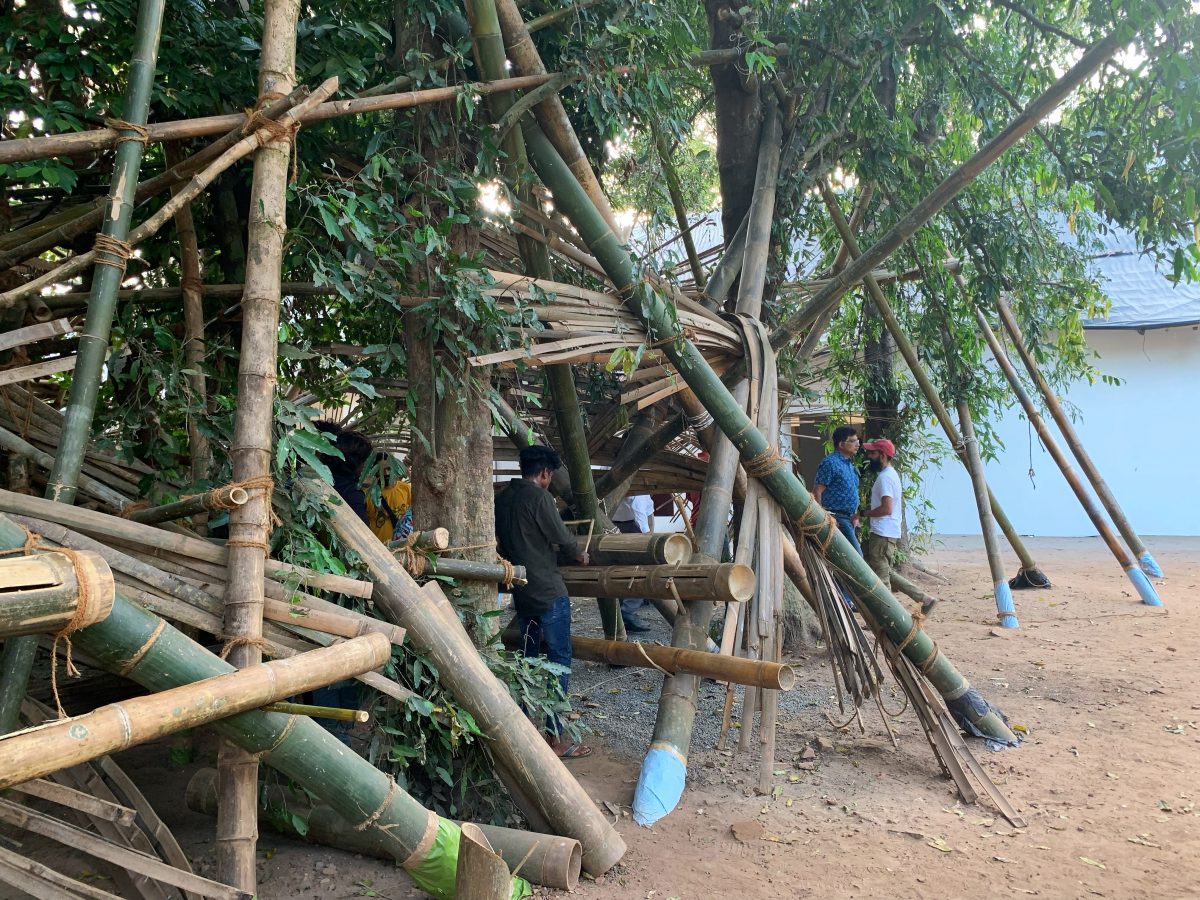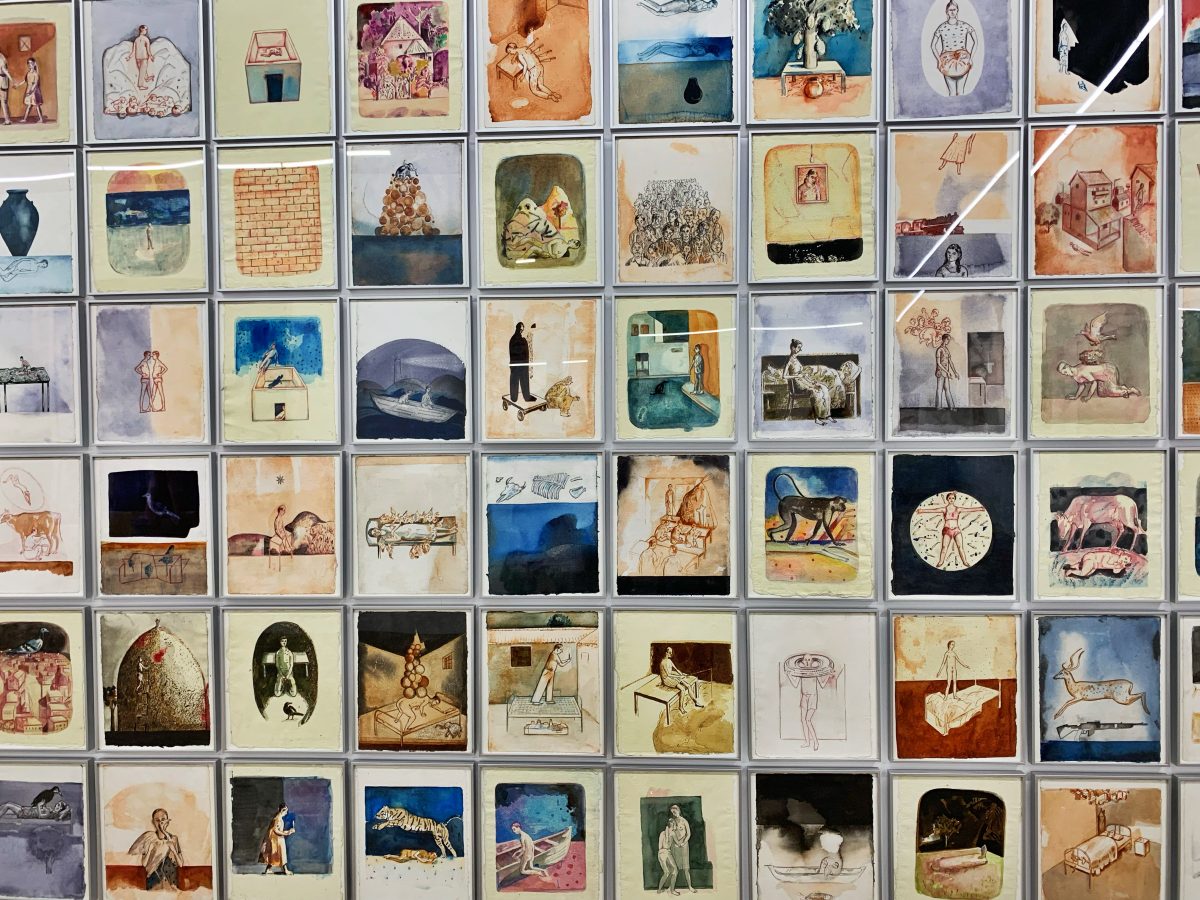The current edition of the Kochi-Muziris Biennale – the most famous exhibition of contemporary art in India and Southeast Asia – celebrates its tenth anniversary. Eighty artists and collectives with over 45 new commissions from India and around the world gathered for the current event, which opened in December 2022 and runs until April 2023. Along with works of art from India and Bangladesh, artists from China and Korea, Germany and the UK, Australia, and other countries, are presented in Fort Kochi and its surroundings. Artist talks, film screenings and master classes are also planned to take place.

The Biennale curator, a Mumbai-born Singaporean artist, and writer, Shubigi Rao conceptualized the current event five years ago. But twice the Biennale had to be postponed due to the pandemic. The main theme, ”In our Veins flow Ink and Fire”, reflects the curator’s idea of “the power of storytelling as a strategy, the transgressive power of ink, and the transformative fire of optimism.“ The curatorial lens seems dark given the recent circumstances, from a pandemic into a war, despite being in the middle of a climate crisis and global recession.
The Biennale takes place in old historic buildings that used to be warehouses for storing spices, as well as the palaces of the former nobility, or now the modern designer cafes and art galleries. The center of the exposition is the Aspinwall House – a large building overlooking the sea. In the middle of the 19th century, it was used for a company founded by the English businessman John Aspinwall, who traded pepper, ginger, coconut oil, and other valuable raw materials, which are so rich in southern India. Several colonial buildings are grouped around a spacious courtyardwith a few installations.
Archana Hande’s Installation “My Kottige” is made from household waste and it refers to the evil eye, which is often averted in South Asia, to break the continuity of baleful vision.
Copyright: Tatiana Rosenstein
Firstly, the work of an Aboriginal Australian Richard Bell, to whom the last Documenta in Kassel, Germany dedicated an exposition hall. His recent project is a tent called “Embassy” which refers to discrimination and exploitation faced by aboriginal population long after the colonial period. The exterior of the tent exhibits posters with the messages like “Why is democracy being celebrated when life as an aboriginal is forbidden?”
“Improvise” is a bamboo installation by a Delhi-based artist Asim Waqit for the Kochi-Muziris Biennale whose structure creates a refuge from the hustle and bustle of modern life. This work can be seen as a guide to behavior, both personal and social, with which we can get out of difficult dilemmas. With the right resources, people can feel encouraged to make creative decisions or work together. Indeed, some of the exhibition visitors not only walk through this wooden labyrinth, but undertake to beat the rhythm of the drum roll with sticks, attracting crowds of listeners.

Among this year’s participants are many young and emerging Indian artists who – judging by the quality of their work – have a great future. Keralan Devi Seetharam, in her large canvas piece “Brothers, Fathers and Uncles” (2022), is concerned with the formation of heterosexual male bonds in social spaces and how exuberant masculinity contributes to patriarchy in her home state Kerala. Over the years, she has amassed a photographic archive of men among men in public places dressed in the traditional munda (dhoti).

The seasons come and go, but the men still occupy the public space, rehearsing the learned choreographies of masculinity weaved in the warp and weft of the mundu, backed up unquestioningly by movements that wave, twist, and tuck the ends of garments. There is no place for women in this world. The artist’s process, which involves lathering the canvas with layers of paint before peeling them off to reveal the canvas underneath, is almost archeological. This gestures towards a historical constant in the gendered definition of shared social and political spaces.

Pranay Dutta – a young artist from New Delhi and Kolkata – creates dystopian black-and-white landscapes. In “Day Zero”, “Neti” or “Untitled” (all – 2022) he presents his visions of Earth’s future – devastated and crippled. His acrylic-on-photograph works act as documentation of these sterile worlds. He warns humanity about the consequences of wars and climate change. Involuntarily, the viewer finds himself in the midst of a designed post-apocalyptic hell – superstructures built into dams, stone towers, and rocky valleys. Plumes of mushroom smoke and the absence of humans and animals imply that this is the after, and that the world continues even after death. The Baroda artist, Vasudevan Akkitham, dedicated his “Almanac of a Lost Year” (2020-21) to the recent COVID-19 pandemic. A crow sits on a broken branch, and a man repairs a chandelier on the stairs; a candle burns on a table without people. Three hundred and sixty-five small watercolors were created during the lockdown to mark each day. Like daily entries in a diary, these images provide an opportunity to reflect on the outside world to which we have suddenly lost access.

Korean artist Yang Hae-gue, who lives and works in Berlin, tries to communicate with the viewer using non-verbal, abstract methods – with the help of “sound sculptures” in the installation “Sonic Droplets – Steel Buds” (2022). Bells and their music have long been endowed with a variety of ritual meanings, from Korean shamanism to European pagan rites and folklore.
The sound served as intercession in the human and spiritual realms. The installation “Sonic Droplets” consists of over 100,000 stainless steel bells.
Copyright: Tatiana Rosenstein
Bells and their music have long been endowed with a variety of ritual meanings, from Korean shamanism to European pagan rites and folklore. As spectators pass through the curtain, their movements activate the bells, creating sounds similar to the sonic nature of numerous ritual practices, both spiritual and secular.
The impressive work “Bombay Tilts Down” was brought to Kochi by the Mumbai group CAMP. The multi-channel video installation presents a landscape filmed by a remotely controlled CCTV camera on the roof of a tall building in the center of Mumbai, covering mostly Lower Parel and Worli neighborhoods. The video begins with the sky and the sea, in changing times and unsettled weather then descending into the city’s everyday life, focusing on the Palais Royal, the tallest building in the city that has stood unfinished for over a decade, the scandal-ridden Samudra Mahal skyscraper.
When people appear in the images, it seems that they know about this eye in the sky. The electronic score for the installation was written by BamBoy (Tushar Adhav), who has lived in Parel since childhood. Sirens and poets haunt the track.
In “My Kottige” (Bhoota Sthana, 2022) Bangalore-based artist Archana Hande explores the living archives of everyday life, the rapid urbanization of ghost towns. The installation is made from household waste, inspired by the sayings of her grandmother. Kalu-Kudka, which literally means drink-drunk ghost, is shaped like a stone, out of place but easily coexisting with the rigid Brahmanical culture of the Hande’s ancestral home. The artist’s work also refers to the evil eye, which is often averted in South Asia, using jalis (perforated screens) to break the continuity of baleful vision, jharokhas (stone lattice windows) to peer in unnoticed, and pillars to hide behind. Hande combines the two elements of Kalu-Kudka and Jharakha together to create sculpture shrines, which support the city’s new Bhoota Sthana (spirit worship ritual), a symbolic sanctuary for protecting the environment from the evil eye of contemporary social conflicts between gender, class, caste, and sexual identity. The viewer cannot enter the sanctuary, but must look at it through the windows.




